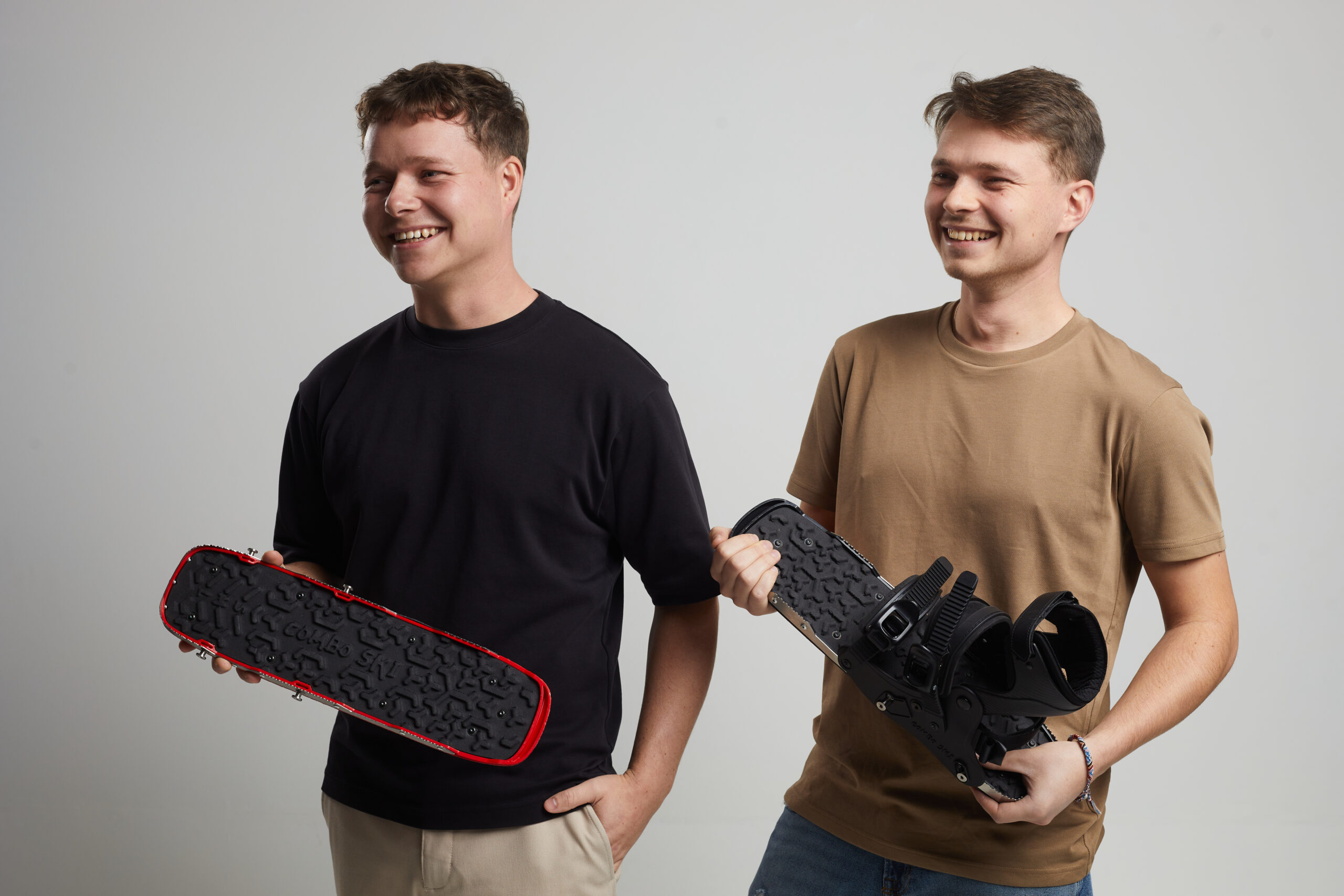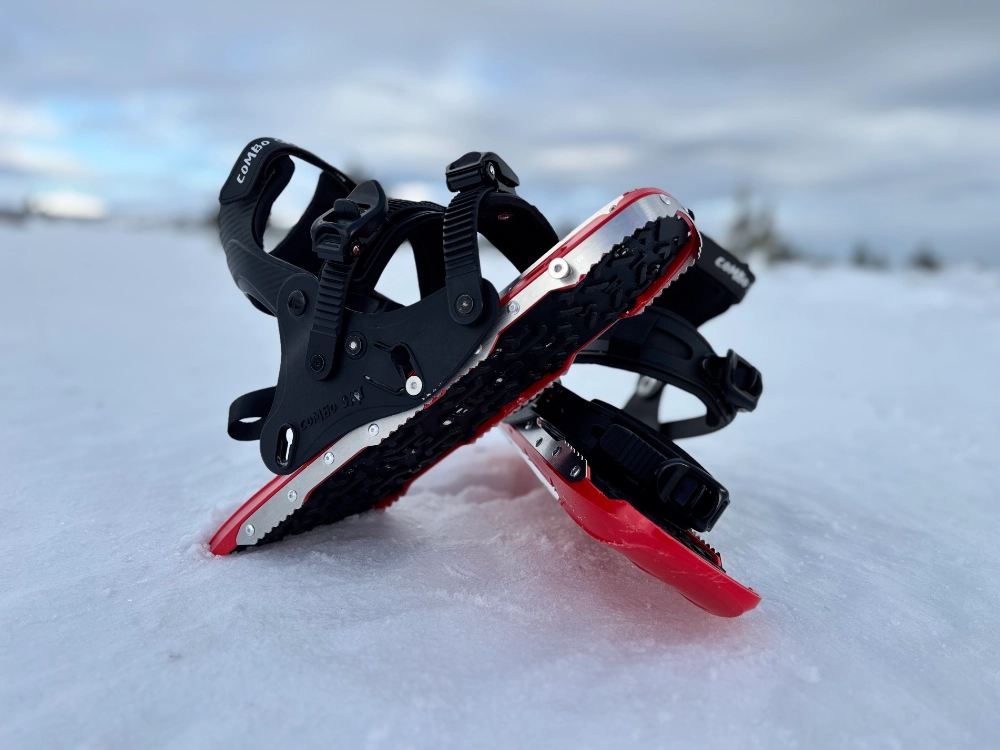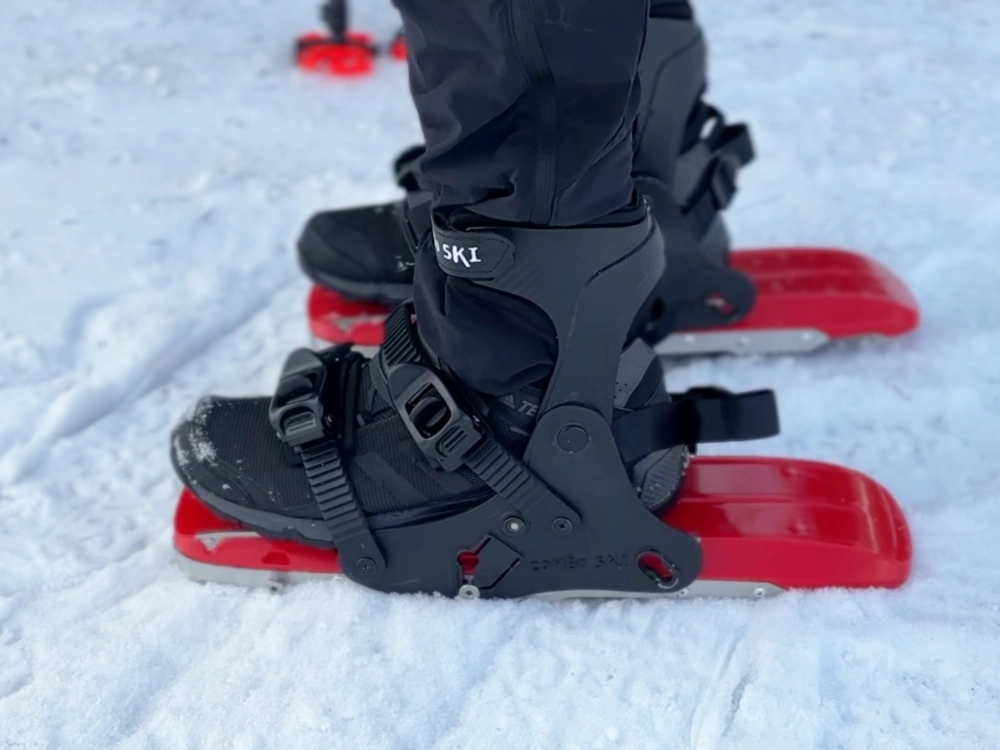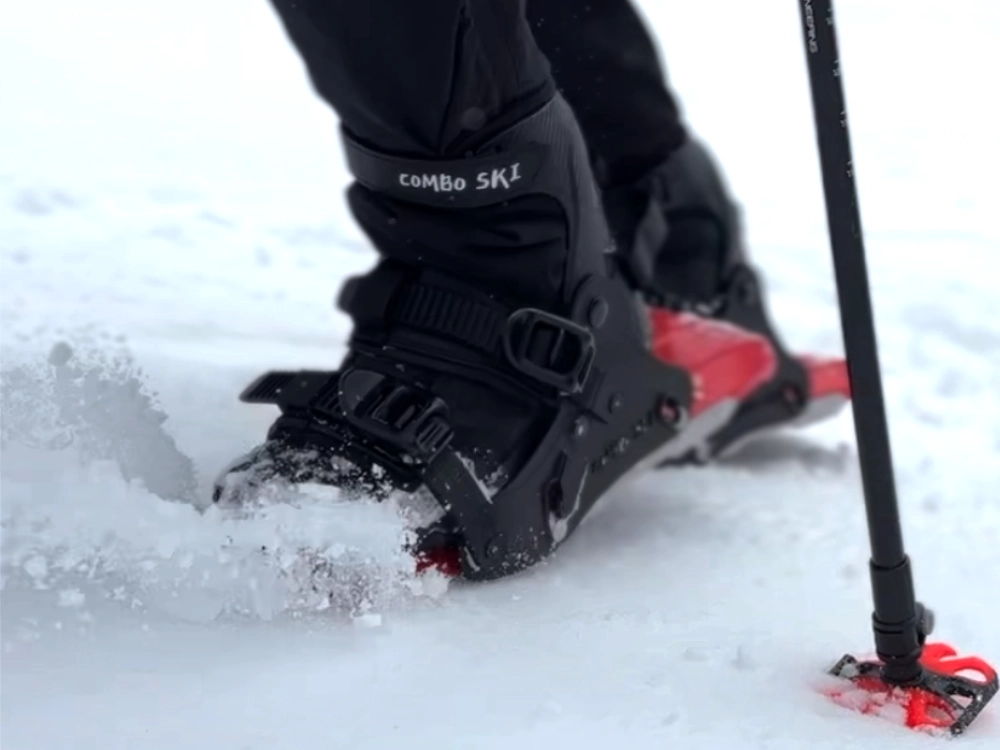Menu
close
The innovative product of two Czech brothers, combining mini skis, ice cleats and snowshoes, has caught the attention of many mountaineers. I had the opportunity to test Combo Ski in our Jeseniky conditions. How did they fare in deep snow, on icy trails and during difficult descents? Did they meet expectations, or did they have their limits?
The innovative product of two Czech brothers, combining mini skis, ice cleats and snowshoes, has caught the attention of many mountaineers. I had the opportunity to test Combo Ski in our Jeseniky conditions. How did they fare in deep snow, on icy trails and during difficult descents? Did they meet expectations, or did they have their limits?
Behind the development of Combo Ski are brothers, Ondra and Vojta Veverka, who set themselves the goal of creating an aid that would offer easy walking uphill, stable movement in ungroomed terrain and smooth descent from hills. This Czech invention combines elements of snowshoes, skis and non-slips, which should ensure versatility on different types of terrain. You can read more about their story on the Combo Ski website.

From the first look at the carefully packaged product, it was clear that the Veverka brothers paid maximum attention to every detail. No casually thrown components, no chaos in the box, everything had its precisely defined place and gave the impression of precision and thoughtfulness. Each element has been carefully positioned to not only protect the product itself during transport, but also to enhance the impression of first contact with this innovative piece of equipment.

I admit that few things can excite me as much when unpacking as when I see that the creators have taken care of such a detail as the packaging itself. Even at that moment, I had a hunch that the Combo Ski would not be just another piece of winter equipment, but would really change my experience in the mountains.

One of the main attractions is the innovative pivot system, which allows easy and quick switching between two modes, i.e. snowshoes/ice cleats for comfortable walking in deep snow and mini skis for smooth glide and descents. This flexibility gives the ability to adapt to current conditions without having to carry multiple pieces of equipment.
At first glance, the mechanism may seem complicated. Switching requires unfastening the binding, turning it and reattaching it. Although this procedure seems a bit lengthy at first, it only takes a few tries and you can switch between modes in a few seconds. Personally, I watched every step in the beginning to make sure that the bindings were properly fastened. Over time, however, with increasing experience, I mastered the movement so much that I made the switch almost automatically.
One of the significant advantages of Combo Ski is its low weight and compact dimensions, which you will appreciate especially during longer tours. Thanks to their lightweight construction, which weighs just over 2 kg, they do not pose any significant burden. With the bindings unfastened, you can pack them into your backpack, or simply attach them to the outside of the backpack using straps, where they will remain stably attached.

Another practical advantage is their flexible binding system. Unlike regular skis, they don't require special bindings, which means you can use them with a wide range of boots, whether you prefer trekking boots, hiking boots, or snowboard boots. To ensure the most comfortable and secure fit, a step-by-step manual is included to guide you through the setup process. With its help, you can adjust the Combo Ski to fit your foot perfectly.

When testing the Combo Ski, I focused mainly on their performance in mountain terrain to see how they cope with the real conditions that hikers and mountaineers commonly encounter. I went with them to places that I consider to be ideal test sites, i.e. Vysoka hole, Bridlicna hora and Vresova studanka. These places are characterized not only by alternating steep ascents and open plains, but also by more technically demanding sections, where you can see how the equipment copes with different types of snow and terrain.
Already the first steps with snowshoes/ice cleats in deep snow have shown that Combo Ski is not just an interesting concept, but a truly functional tool. With my height of 176 cm and weight of 74 kg, I expected the skis to sink significantly. They sank in a bit, but compared to classic boots, they certainly made it much easier to move in the snow.
However, what surprised me the most was the overall stability when walking. Every step was firm and sure, without unexpected slips or loss of balance, which pleasantly surprised me, especially on steeper slopes. Thanks to this, I could think about where to take the next step, unlike a situation where I wouldn't have Combo Ski on trekking boots.
Combo Skis are significantly shorter than regular skis, so it was necessary to adapt my riding style to achieve the best possible stability and control. Right from the first downhills, I realized that the key factor is working with the center of gravity. It was necessary to concentrate more on bent knees, maintain a low posture and actively balance body movements. This style of riding may seem a bit challenging at first, but once you get used to it, it will reward you with a very fun ride.
On soft powder, my first experience was very positive. The ride was smooth, well controlled, and didn't require excessive force to maintain stability. With the right weight distribution and sensitive work with the center of gravity, it was possible to easily adapt to the slope slope and speed. What surprised me the most was how intuitive the controls are, once you get used to the shorter length of the skis, turning was relatively easy and the reactions to body movements were immediate.
Another interesting feature of Combo Ski is their versatility when moving on different types of terrain. If the surface is sufficiently firm, flat and smooth, for example on frozen snow or a traveled slope, a technique similar to skating can be used. This way of moving is ideal for fast movements on flatter sections.
However, the icy sections required significantly more caution and precise work with the center of gravity. Due to the absence of the classic metal edges that we know from touring or downhill skis, the Combo Ski cannot be cut into a turn on hard surfaces as one would expect from normal ski equipment. This means that braking and turning on frozen snow or ice is much more complex and requires not only the right technique, but also a great deal of experience and adaptation to the conditions.
I admit that I have found myself on the ground more than once. Sometimes it was just a slip, sometimes insufficient braking. As the hours went by, and especially after a few days of testing, I gradually got used to the specifics of the Combo Ski and learned to control them better. In softer snow, the ride is smoother and more playful.
In any case, it is always crucial to evaluate the conditions well before the actual descent. While Combo Skis work great on powder, their limits can be felt more noticeably on ice plates and extremely hard surfaces. Therefore, it is always a good idea to consider in advance whether these mini skis are the best choice at the moment and adjust the style of skiing itself accordingly.
During the field testing, I couldn't help but notice the curious looks of other hikers and mountaineers, who often peeked at me and obviously wondered what I was actually wearing on my feet. It often happened that someone stopped me and started talking. "These are the new skis and snowshoes now, aren't they?" was probably the most common question I heard during testing. It turned out that many people had heard of Combo Ski, some had seen them in commercials or on socials, but were still hesitant to buy them.

Some hikers even took pictures of Combo Ski and wanted to see them up close. It was clear that interest in this type of equipment is growing, but at the same time there is still a certain amount of skepticism that is naturally associated with similar innovations. New technologies and unconventional solutions often arouse enthusiasm and distrust at the same time. While some hikers were downright excited about the idea of not having to pull snowshoes and skis separately, others were still unsure if such short skis could handle what they expected from them.
And that's why I consider my personal experience with this product to be crucial. Until you try Combo Ski for yourself, it's hard to get a truly objective picture. I believe that the more people get acquainted with this concept in real terrain, the easier it will be for this Czech innovation to gain its fans – and as I verified during testing, there is definitely interest.
And I'm not surprised. Every new product has to go its way from distrust to wider acceptance. When snowboarding first appeared, it also aroused contradictory reactions. Many people considered it dangerous, clumsy, and some ski resorts even did not want snowboarders on their slopes at all. Just look at the legendary video from 1985, where resort managers in the USA explain why snowboards do not belong on the slopes.
I believe that a similar process of adaptation as the snowboard had will be with the Combo Ski. Once the general public verifies that it is a functional and practical tool, it can become a common part of winter trip equipment.
Personally, I was excited about this product for several reasons. Not only did it save me space in my backpack, but above all it made it much easier for me to move around in the field. Being able to quickly switch between walking and descending gave me flexibility that I had never experienced with other equipment. I didn't have to decide whether to take snowshoes, ice cleats or skis on a hike – I had everything in one compact package. In my opinion, this element of adaptability is one of the main reasons why the Combo Ski will find its fans, especially among those who want to explore the winter landscape without having to carry several pieces of equipment.
Of course, as with any new product, there would be a few little things that could be tuned, such as larger spikes on the non-slips or a brake on the right rear side, similar to in-line skates. But these are rather subjective details that do not reduce the overall benefit of this equipment. In addition, it is common for further development to come with gradual improvements that can take Combo Ski even further.
If you are interested in more information from the production or experience from other people who have actually tried mini skis, snowshoes and non-slips in the field, I have a great tip for you. Watch the video from Radek Houser and Martin Hausner, who decided to test the Combo Ski on Kralicky Sneznik.